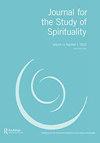对全球土拨鼠日的反思
IF 0.8
0 RELIGION
引用次数: 0
摘要
在我的上一篇社论中,我写道,对于正在进行的新冠肺炎大流行以及世界各地各种形式的社会和政治混乱,需要“抱着最好的希望,同时做好最坏的准备”。我请大家考虑在这样的时代研究精神的作用和相关性。六个月后,英国进入第三次“封锁”几周,试图减缓病毒的进一步传播,其他地方也实施了许多类似的限制措施,缅甸、俄罗斯和美国等地仍存在危险的政治紧张局势,我有时觉得我们都被困在了一个全球“土拨鼠日”中。1993年的同名电影中,主角菲尔·康纳斯(Phil Connors)陷入了一个时间循环,迫使他反复回到同一天,这个词因此进入了英语的流行词典。许多生活在封锁条件下的人,无法在自己的直系亲属之外社交,也无法在最近的杂货店之外旅行,毫无疑问,当他们思考每天明显重复的“相同”时,他们将能够与时间循环图像联系起来。然而,值得一看的是,“有一个土拨鼠日”已经成为陈词滥调,因为为这部电影命名的事件,以及电影本身发生的事件,与精神研究有一定的关系,也许表明了它在当前的特殊意义。Phil Connors被困的时间循环集中在美国宾夕法尼亚州一个名叫Punxutawney的小镇上。作为一名电视天气预报员,Phil在那里报道每年2月2日举行的仪式和仪式。他愤世嫉俗,自私自利,毫不掩饰他对这项任务和镇上所有人的蔑视。这部电影的大部分内容都是关于菲尔如何接受与他人的关系,并学会理解自己。这部电影所依据的是一个真实的事件:自1887年以来,普克苏托尼每年都会庆祝现在被称为土拨鼠日的活动。这是土拨鼠从冬眠中醒来的日子,表面上是为了预测天气。传统认为,如果天气晴朗,土拨鼠能看到自己的影子,那么冬天还会有六周的天气;如果是阴天,因此他没有影子,那么就会有早春。这一传统似乎是由来自德国的定居者引进的,在那里,刺猬(或獾,取决于人们读到的故事的哪个版本)被认为具有天气预测的能力。这个日期意义重大,因为在北半球,它处于冬季和春季之间。以太阳在天空中的明显运动和相关的季节变化为标志,将一年划分为几个部分,这是所有人类文化的共同主题,因为种植和收获都依赖于它本文章由计算机程序翻译,如有差异,请以英文原文为准。
Reflections on a global Groundhog Day
In my last Editorial I wrote about the need ‘to hope for the best whilst preparing for the worst’ in relation to the ongoing Covid-19 pandemic and social and political disruption in various forms around the world. I invited consideration about the role and relevance of the study of spirituality in such times. Six months later, with the UK several weeks into its third ‘lockdown’ in an attempt to slow further spread of the virus, many similar restrictions in place elsewhere, and dangerous political tensions still in evidence in places as far apart as Myanmar, Russia and the USA, I sometimes feel as though we have all become trapped in a global ‘Groundhog Day’. That term entered the popular lexicon of the English language as a result of the 1993 film of the same name in which the lead character, Phil Connors, is caught in a time loop which forces him to re-live the same day repeatedly. Many people living in lockdown conditions, unable to socialise outside their own immediate household or to travel further than the nearest grocery store, will undoubtedly be able to relate to the time loop image as they contemplate the apparently repetitive ‘sameness’ of each day. However, it is worth looking beyond the cliché that ‘having a Groundhog Day’ has become because the event which gave its name to the film, as well as events within the film itself, bear some relationship to the study of spirituality and perhaps point to its particular significance at the present time. The time loop in which Phil Connors becomes trapped centres on a small town called Punxsutawney in Pennsylvania, USA. As a television weatherman, Phil is there to report on a ceremonial gathering and ritual which takes place each year on 2nd February. Cynical and egotistical, he makes no secret of his contempt for this assignment and everyone in the town. Much of the film is about how Phil comes to terms with his relationships with others and learns to understand himself. The event on which the film is based is a real one: what is now known as Groundhog Day has been celebrated annually in Punxsutawney since 1887. It is the day on which a groundhog is woken from its hibernation, ostensibly to predict the weather. Tradition has it that, if the day is sunny and the groundhog can see his shadow, there will be six more weeks of winter weather; if it is cloudy, and he therefore has no shadow, there will be an early spring. The tradition appears to have been imported by settlers from Germany where hedgehogs (or badgers, depending on which version of the story one reads) were deemed to have the power of weather prediction. The date is significant because, in the northern hemisphere, it is poised between winter and spring. The division of the year into segments, marked by the apparent movement of the sun across the sky and the associated seasonal changes, is a common theme in all human cultures since planting and harvesting depend upon it. Falling mid-way between the winter solstice
求助全文
通过发布文献求助,成功后即可免费获取论文全文。
去求助
来源期刊

Journal for the Study of Spirituality
RELIGION-
CiteScore
2.50
自引率
7.10%
发文量
25
期刊介绍:
Journal for the Study of Spirituality is a peer-reviewed journal which creates a unique interdisciplinary, inter-professional and cross-cultural forum where researchers, scholars and others engaged in the study and practices of spirituality can share and debate the research, knowledge, wisdom and insight associated with spirituality and contemporary spirituality studies. The British Association for the Study of Spirituality (BASS) organises a biennial international conference and welcomes enquiries about membership from those interested in the study of spirituality in the UK and worldwide. The journal is concerned with what spirituality means, and how it is expressed, in individuals’ lives and communities and in professional practice settings; and with the impact and implications of spirituality in, and on, social policy, organizational practices and personal and professional development. The journal recognises that spirituality and spiritual values can be expressed and studied in secular contexts, including in scientific and professional practice settings, as well as within faith and wisdom traditions. Thus, Journal for the Study of Spirituality particularly welcomes contributions that: identify new agendas for research into spirituality within and across subject disciplines and professions; explore different epistemological and methodological approaches to the study of spirituality; introduce comparative perspectives and insights drawn from different cultures and/or professional practice settings; aim to apply and develop sustained reflection, investigation and critique in relation to spirituality and spiritual practices; critically examine the values and presuppositions underpinning different forms of spirituality and spiritual practices; incorporate different forms of writing and expressions of spirituality.
 求助内容:
求助内容: 应助结果提醒方式:
应助结果提醒方式:


